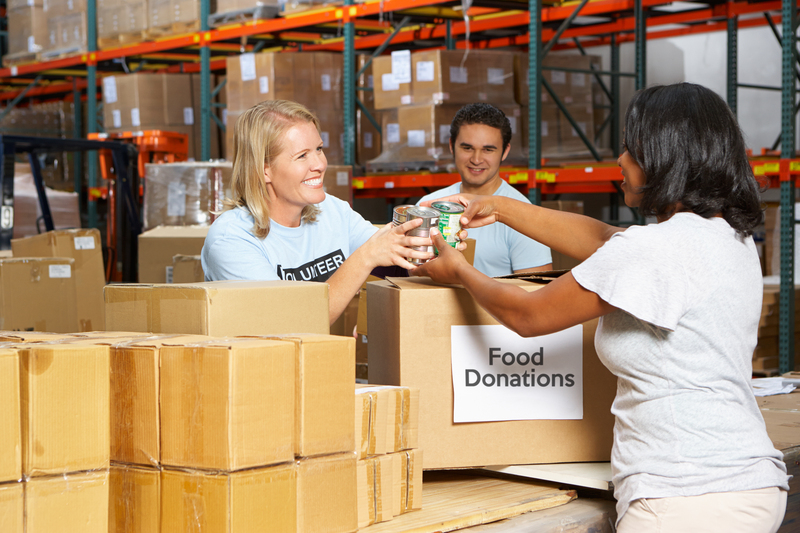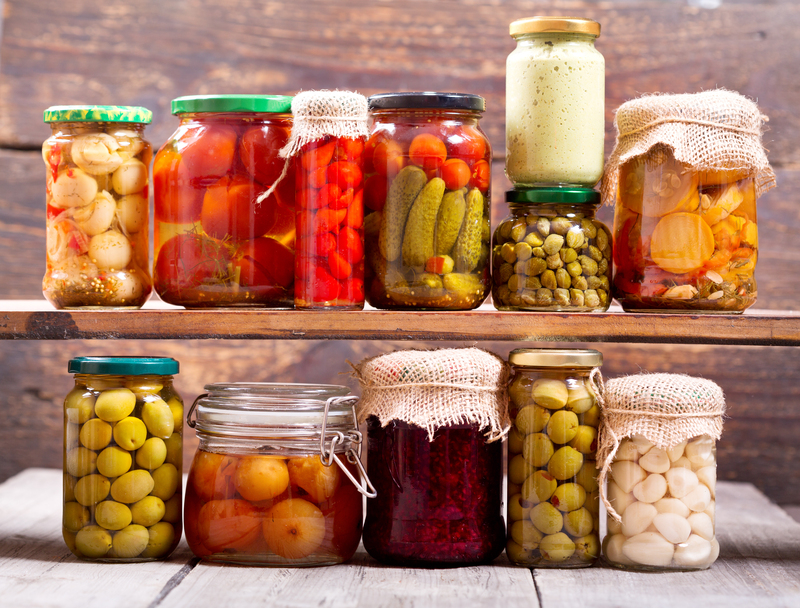Transforming Packaging Waste through Responsible Cardboard Disposal
In today's rapidly evolving marketplace, packaging plays an indispensable role in the transportation, protection, and presentation of products. As consumerism grows, the surge in packaging materials--particularly cardboard--has led to mounting concerns about waste generation and environmental impact. However, by transforming packaging waste through responsible cardboard disposal, businesses and individuals can drive substantial progress toward a more sustainable future.

Understanding the Scope of Cardboard Packaging Waste
Cardboard, classified as paperboard or corrugated fiberboard, is one of the most widely used materials for packaging across the globe. Its popularity stems from attributes such as durability, lightweight design, and recyclability. Yet, this widespread usage comes with a downside: enormous volumes of discarded boxes, cartons, and packaging inserts fill landfills every year. According to recent estimates, the United States alone disposes of over 30 million tons of cardboard and paper products annually.
- Retailers often generate vast quantities of cardboard from shipping containers and display packaging.
- Households contribute through online shopping boxes and food packaging.
- Industrial sectors use cardboard to safeguard machinery parts and equipment during transit.
The environmental impact of improper cardboard disposal includes deforestation, increased greenhouse gas emissions, and overfilled landfills. Additionally, when cardboard decomposes anaerobically in landfills, it emits methane--a potent greenhouse gas contributing to climate change.
Why Responsible Cardboard Disposal Matters
Responsible cardboard disposal refers to practices that minimize the environmental footprint associated with cardboard packaging waste. It encompasses recycling, upcycling, composting, and reusing cardboard material wherever feasible.
Key Benefits of Responsible Cardboard Waste Management
- Conservation of Natural Resources - Recycling cardboard saves trees and reduces the need for virgin materials.
- Energy & Water Savings - The production of recycled cardboard uses less energy and water than manufacturing new cardboard.
- Reduced Landfill Burden - Effective cardboard collection and recycling help lower landfill volumes.
- Lower Greenhouse Gas Emissions - Responsible disposal reduces methane emissions and limits pollution associated with waste incineration.
- Economic Opportunities - The recycling industry creates jobs and promotes a circular economy.
By transforming packaging waste through responsible cardboard disposal, businesses and communities foster a cleaner environment and support eco-friendly initiatives.
Best Practices for Cardboard Packaging Waste Transformation
The journey from wasteful disposal to impactful recycling and repurposing is driven by adherence to best practices and innovative strategies. The following methods ensure that cardboard packaging waste is managed responsibly and sustainably:
1. Efficient Segregation and Collection
- Separate Cardboard from Other Waste: Designate specific bins for cardboard to prevent contamination with food, plastic, or other rubbish.
- Flatten Boxes: Flattening boxes before disposal maximizes space in recycling containers and reduces transportation costs.
- Remove Non-Cardboard Elements: Clear packaging tape, labels, and plastic windows to enhance recyclability and processing efficiency.
2. Recycling Used Cardboard
- Local Recycling Programs: Participate in community curbside recycling or drop-off centers equipped to handle cardboard waste.
- Commercial Recycling Partnerships: Businesses can collaborate with recycling companies to schedule pickups and ensure compliance with best practices.
- Request Sustainable Packaging from Suppliers: Encourage suppliers to use packaging that is 100% recyclable and clearly labeled.
3. Upcycling and Reusing Cardboard
- Creative Reuse: Use old cardboard boxes for storage, moving, arts & crafts, kids' playhouses, or even garden mulch.
- Supporting Local Initiatives: Donate used, clean boxes to moving companies, charities, or local marketplaces for reuse.
4. Composting Cardboard Packaging Waste
Composting is an eco-friendly way to handle cardboard waste, especially for materials that are uncoated and free from ink or tape.
- Shred Cardboard: Break down corrugated sheets into smaller pieces to accelerate decomposition.
- Mix with Organic Waste: Incorporate cardboard with green compostables such as food scraps and grass clippings for balanced nutrient content.
5. Supporting Innovative Solutions
- Promoting Circular Economy Models: Participate in initiatives that return used packaging to manufacturers for reuse or closed-loop recycling.
- Exploring Bio-Based Cardboard Alternatives: Use packaging made from renewable resources and designed for easy recycling or biodegradation.
The Lifecycle of Cardboard: From Waste to Resource
Understanding the recycling process elucidates how responsible cardboard disposal transforms waste into valuable resources:
- Collection: Cardboard waste is gathered from households, retailers, and industries.
- Sorting: Facilities sort cardboard by type and remove non-recyclables.
- Pulping: Cardboard is mixed with water and processed into pulp, breaking fibers apart.
- Cleansing: The pulp is filtered to remove inks and adhesives.
- Refining & Rolling: The clean pulp is pressed into sheets, dried, and cut to produce new cardboard products.
This closed-loop process highlights the enormous potential of cardboard packaging waste transformation, enabling repeated cycles of use that conserve resources and protect the environment.
Challenges in Cardboard Disposal and Recycling
Despite its benefits, responsible cardboard waste management faces several challenges:
- Contamination: Food residues, plastic coatings, and tapes reduce composting and recycling yield.
- Insufficient Infrastructure: Many regions lack access to efficient recycling facilities or programs.
- Lack of Awareness: Individuals and businesses may be unaware of proper cardboard sorting and recycling techniques.
Addressing these obstacles requires collaboration, education, and policy intervention to build a responsive, environmentally conscious culture around packaging waste.
Driving Change: How Businesses Can Lead Responsible Cardboard Disposal
Businesses wield profound influence over packaging practices and can spearhead the transformation of cardboard waste streams through several actionable measures:
Adopting Sustainable Packaging Design
- Minimalist Packaging: Reduce packaging size, eliminate unnecessary inserts, and use thinner yet strong cardboard to minimize material use.
- Clear Labelling: Indicate recyclability and provide consumers with instructions for proper disposal.
- Use of Recycled Content: Source packaging materials made from post-consumer recycled cardboard.
Establishing In-House Recycling Programs
- Implement Cardboard Collection Bins: Place bins strategically across warehouses, offices, and retail spaces.
- Employee Training: Educate staff on sorting, flattening, and preparing cardboard for recycling.
- Tracking Progress: Monitor waste diversion rates and regularly update stakeholders on milestones achieved.
Engagement & Advocacy
- Collaborate with Local Authorities: Partner with municipalities and waste management agencies to improve recycling infrastructure.
- Customer Education: Share tips and resources via packaging inserts, websites, and point-of-sale materials on responsible cardboard disposal practices.
- Supplier Relations: Request sustainable, recyclable, and return-friendly packaging from partners and manufacturers.
How Consumers Can Participate in Cardboard Packaging Waste Transformation
While businesses bear a significant share of responsibility, consumer involvement is crucial for successful cardboard waste management:
- Learn Local Guidelines: Check municipal recycling rules for cardboard--some accept all types, others exclude waxed or food-contaminated packaging.
- Clean Before Recycling: Remove plastic, food residues, and excessive adhesives from boxes.
- Reuse and Upcycle Creatively: Think before throwing away. Consider if boxes can be reused or offered to someone in need.
- Support Responsible Brands: Choose to buy from companies committed to sustainable packaging and take-back programs.
By practicing these habits, individuals make a meaningful contribution to the journey of transforming packaging waste into valuable resources.
The Role of Policy and Regulation in Sustainable Cardboard Disposal
To reinforce responsible cardboard disposal, policymakers and governments can enact and enforce regulations that nurture sustainable behaviors at every level.
- Extended Producer Responsibility (EPR): Laws that require manufacturers to handle the end-of-life management of packaging products.
- Mandatory Recycling Standards: Regulations to ensure that retailers and commercial entities meet minimum recycling targets.
- Investment in Infrastructure: Public funding or incentives for modernizing waste collection, sorting, and recycling facilities.
Comprehensive policymaking bridges the gap between intention and action, aligning economic, environmental, and social goals for a cleaner planet.

Innovations Shaping the Future of Cardboard Packaging Waste Transformation
Advancements in technology and design continue to augment responsible cardboard disposal efforts:
- Bio-Based Coatings and Inks: New formulations enable full recyclability and compostability of coated cardboard.
- Smart Packaging: QR codes and near field communication (NFC) tags provide consumers with instant recycling instructions.
- Automated Sorting: AI and robotics in materials recovery facilities (MRFs) improve the speed and accuracy of cardboard processing.
- Returnable Shipping Containers: E-commerce companies are piloting reusable cardboard shipping programs to cut waste at the source.
*Embracing these innovations accelerates the transformation of packaging waste and strengthens the global shift toward a circular economy.*
Conclusion: Committing to a Circular Future Through Responsible Cardboard Disposal
The exponential increase in packaging waste poses undeniable challenges, but it also unlocks opportunities for environmental stewardship and economic growth. By transforming packaging waste through responsible cardboard disposal, companies, communities, and consumers can collaboratively reshape the lifecycle of cardboard, ensuring it remains an asset rather than a liability.
From strategic waste segregation and robust recycling programs to inventive upcycling and supportive policy frameworks, every step matters. As we continue to innovate and educate, responsible cardboard waste transformation will remain at the heart of sustainable packaging solutions--protecting our planet for generations to come.
Let's make every cardboard box the beginning of a cleaner tomorrow.